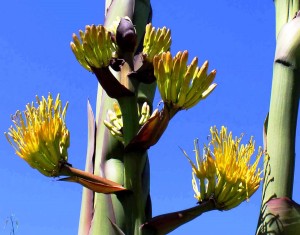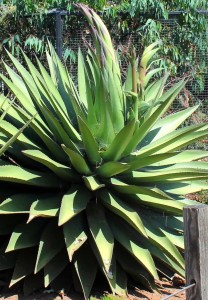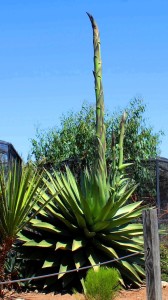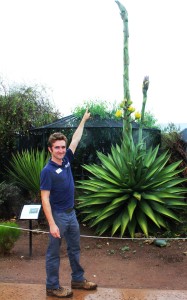Spiders abound at the Living Coast
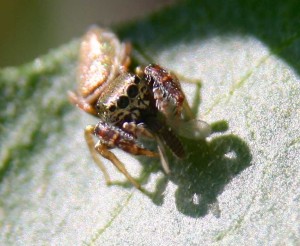 If you know where to look, you can find hundreds of spiders throughout the Living Coast grounds. This being the season of spooky, we wanted to let you in on a little secret: we’re surrounded by ’em!
If you know where to look, you can find hundreds of spiders throughout the Living Coast grounds. This being the season of spooky, we wanted to let you in on a little secret: we’re surrounded by ’em!
Like this feller on your left, a jumping spider (Salticidae) that just caught a fly. Oh, and they have four pairs of eyes. Did we mention they can jump? Most jumping spiders can jump several times the length of their bodies but don’t worry, that’s only about 66 millimeters — or two-and-a-half inches.
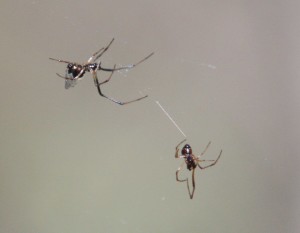 One of our volunteers, Patricia, sent in photos of our spiders, which love to hide in cactus. One of Patricia’s favorites is the dew-drop (Theridiidae) spider. Here’s what she has to say, “Just learned this about the dew-drop spiders of the genus we saw: Spiders in this genus live in the webs of orb weaver spiders. They may be commensal (feeding on prey or prey remains that have been abandoned by the host) or kleptoparasitic (stealing prey that has been captured and/or stored by the host). They may also feed on the host spider or her eggs.” One word: CREEPY!
One of our volunteers, Patricia, sent in photos of our spiders, which love to hide in cactus. One of Patricia’s favorites is the dew-drop (Theridiidae) spider. Here’s what she has to say, “Just learned this about the dew-drop spiders of the genus we saw: Spiders in this genus live in the webs of orb weaver spiders. They may be commensal (feeding on prey or prey remains that have been abandoned by the host) or kleptoparasitic (stealing prey that has been captured and/or stored by the host). They may also feed on the host spider or her eggs.” One word: CREEPY!
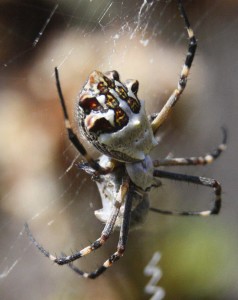 We also have very large house spiders. Is this because they are found in houses or as big as houses!? One other word: YIKES!!!
We also have very large house spiders. Is this because they are found in houses or as big as houses!? One other word: YIKES!!!
You might be wondering where you can find spiders at the Living Coast and, if you’re so inclined (or just want to give them a wide berth) here’s where they abound. Or in the case of the jumping spider, bound:
- Most any cactus on the grounds or the many trails (spiders like cactus because it keeps predators away and prey close to the blooms)
- A lot of the plants along Raptor Row on the way to Eagle Mesa
- In the plants on Sweetwater Marsh, which you can see from our lunch decks.
Once you start looking for them, it’s almost impossible to stop seeing spiders at the Living Coast… Below, you can see more photos of our eight-legged friends, if you dare! MUUUAHAHAHAHA.
Cool evil laugh, eh?
